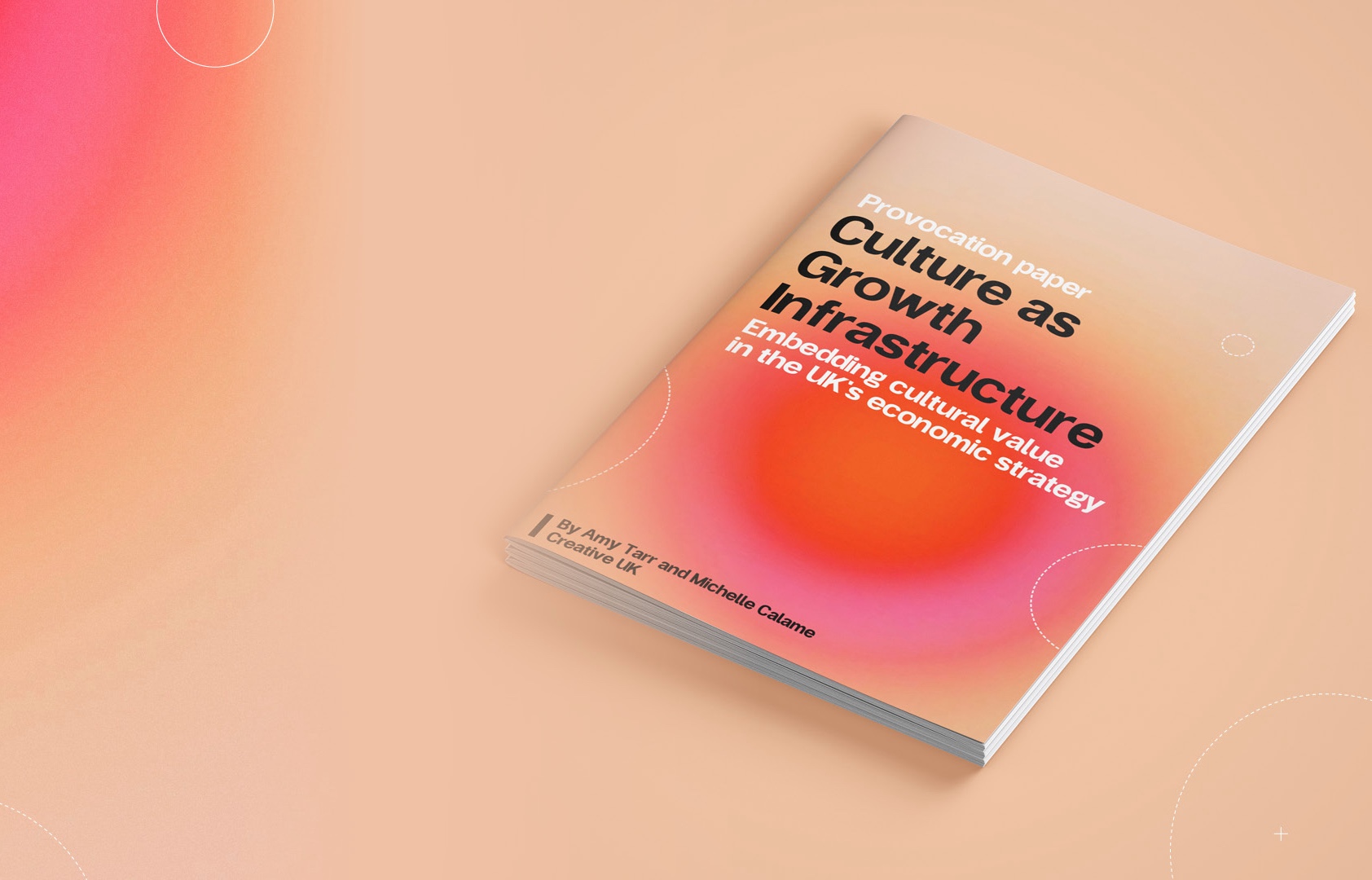
Amy Tarr, Head of Policy, Creative UK
Creative UK Head of Policy, Amy Tarr reflects on the importance and impact of culture after hosting the roundtable session, ‘Culture as Growth Infrastructure’ for Creative UK members from across the cultural and creative industries.
There’s an unspoken hierarchy in infrastructure policy. Transport and energy sit at the top as the heavyweights of national planning. Digital enjoys a seat at the table too, buoyed by years of investment and reform. But culture as infrastructure? It remains on the periphery, often admired but is it treated as a strategic asset?
That discrepancy was the subject of a Creative UK roundtable this week, where economists, civil servants, academics and cultural leaders came together to examine whether our policy frameworks genuinely reflect the value culture generates.
What emerged was not a set of grievances, but a sense of readiness. The cultural sector produces strong case studies of its impact on high streets, on health, on education and on regeneration. Now it is making those arguments in ways that cut through to the departments that matter.
At the roundtable, there was serious economic analysis in play. The Centre for Economics and Business Research has quantified the spillover effects of publicly funded culture, from productivity gains to inward investment. Frontier Economics has developed models that attach monetary values to cultural participation using Treasury-endorsed QALY and WELLBY methods — showing how singing in a choir or attending a museum has measurable implications for public health spending. And the Department for Culture, Media and Sport has developed a Culture and Heritage Capital (CHC) framework that offers a robust methodology for understanding cultural assets not as amenities, but as infrastructure.
As one contributor put it, ’Public investment in arts and culture is not a sunk cost’.
The CHC framework does something previous efforts haven’t. It connects cultural value to the logic of Treasury investment decisions. It provides guidance for applying Green Book methods (a Government approach to applying cost and impact assessment on spending decisions) to cultural assets, emphasising stocks, flows and services; the same conceptual language used for natural capital and public utilities. It gives us the tools to present cultural infrastructure in terms that are legible across Whitehall.
Another learned voice made the powerful observation, ‘If you don’t have the tools for cost-benefit analysis, you’re not in the room.’
But having the tools and using them effectively are different things. Culture still grapples with a fractured narrative. We heard that from cultural experts who observed that other sectors speak with unified strategic intent, whereas culture too often presents as a collection of sub-industries: museums here, theatre there, heritage over the horizon. The consequence is that a recognition of culture as growth infrastructure continues to fall between the cracks. No single investor sees it as their job to fix.
There’s also a question of confidence. Cultural organisations expertly demonstrate what they do but asserting what they are, in terms that prick the ears of the Treasury, is a road less travelled. The former lends itself to outreach and evaluation reports. The latter is what unlocks long-term capital.
But there is an opportunity here. With a government looking to reassert the value of industrial strategy and regional investment, there is space to reframe culture as a core enabler of growth. A sector that benefits from prosperity, but one that also helps to generate it. Other countries already do this. Yesterday, we heard about France’s fiscal model for private cultural investment Loi Aillagon, which allows individuals and businesses to deduct up to 60% of donations to cultural institutions from their tax bill. There is also Brazil’s use of tax credits for cultural participation. Both of these approaches recognise culture as structural, not peripheral.
The UK has its own examples. Aviva Studios in Manchester, supported by both public capital and private sponsorship, is projected to add over £1 billion to the local economy. Cultural projects across England’s combined authorities are acting as anchor tenants in regeneration schemes. But these examples are still treated as exceptions, when they should be the model.
We now have the frameworks to make this shift. What we need is follow-through; coordinated, cross-departmental and politically literate. Culture is infrastructure. Not metaphorically, but materially. It shapes how people move, connect, spend, learn and recover. If we want to build a future that is not only productive but liveable, we should start investing in the growth infrastructure that makes life worth living.
Related news

